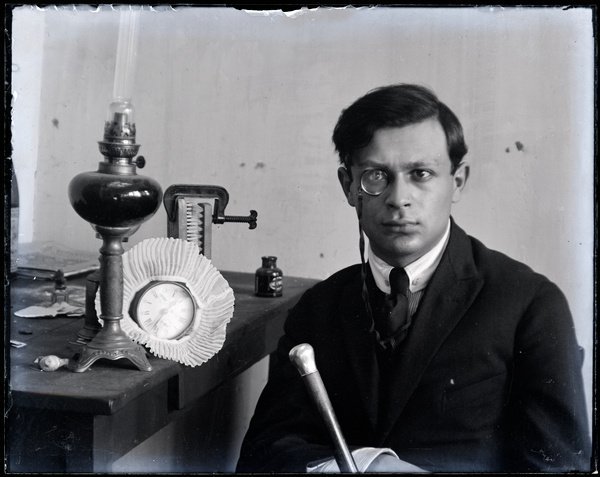Tristan Tzara: dada artist or hero for a revolution?
- Man Ray, Tristan Tzara, vers 1921, Paris, Centre Pompidou, © Man Ray Trust / Adagp, Paris
A part of the western world is at war. It is not a traditional war. It can’t be fought with bombs and tanks: its arms are those of the finance. The result is that in many western areas now there is an economical war, where very few people are getting richer and many are becoming poorer. Why is that? According to a growing number of economists, the crisis is due to the fact that the economy itself has lost its role as a social science. The economy, born as a discipline to serve the needs of all human beings, has become a science at the service of the finance, hence of a more restricted group of people.
Even economists admit it: mathematics has turned economy into a dogma, thus indisputable. It is no coincidence that the recent Nobel laureates in economics are not economists but mathematicians. This process has produced a major effect, which is in the sight of all: the fail of the society’s ambition for egalitarianism.
A struggle to undermine this dictatorship of finance is therefore needed and we believe that a starting point could be found in what the Dadaists did during the First World War. That movement of brilliant artists had decided to destroy a society which had devoted itself to self-destruction. With the aim of destroying the society, Dadaists had put in their target the very foundation of it: the language.
Dada has destroyed the past, the tradition, and everything that had produced the war. But it would be a mistake to think that Dada hasn’t built anything. The endless possibilities opened up by Tristan Tzara, Marcel Duchamp, Kurt Schwitters, Picabia and other Dadaists have inspired the birth of new art, which is still alive.
Nowadays in the art scene, many observers are disappointed by the provocations and the excessive experimentation, by hermeticism and self-contained art. So they call for a return to order, therefore, to tradition. But the return to order is not what our society needs today. What we ought to achieve is instead a new awareness of the world, which can only be attained if we query the certainties of the present. Thus, looking into the future, as well as into the past, without being afraid of novelty.
On December 25, 1963, Tristan Tzara, who is to be considered the true speculative mind behind the Dada movement, died in Paris. Remembering him today is to assert that to get out of the war we need a new art. “A priori, in other words with its eyes closed, Dada places before action and above all: Doubt. DADA doubts everything. Dada is an armadillo. Everything is Dada, too. Beware of Dada” (Tristan Tzara in “Dada manifesto on feeble love and bitter love”,12th december 1920).
As Dada marches it continuously destroys, not in extension but in itself. From all these disgusts, may I add, it draws no conclusion, no pride, no benefit. It has even stopped combating anything, in the realization that it’s no use, that all this doesn’t matter. What interests a Dadaist is his own mode of life. But here we approach the great secret.
Dada is a state of mind. That is why it transforms itself according to races and events. Dada applies itself to everything, and yet it is nothing, it is the point where the yes and the no and all the opposites meet, not solemnly in the castles of human philosophies, but very simply at street corners, like dogs and grasshoppers.
Like everything in life, Dada is useless.
Dada is without pretension, as life should be. Perhaps you will understand me better when I tell you that Dada is a virgin microbe that penetrates with the insistence of air into all the spaces that reason has not been able to fill with words or conventions.
Tristan Tzara, from “Dada manifesto”, 1918.
July 17, 2015

